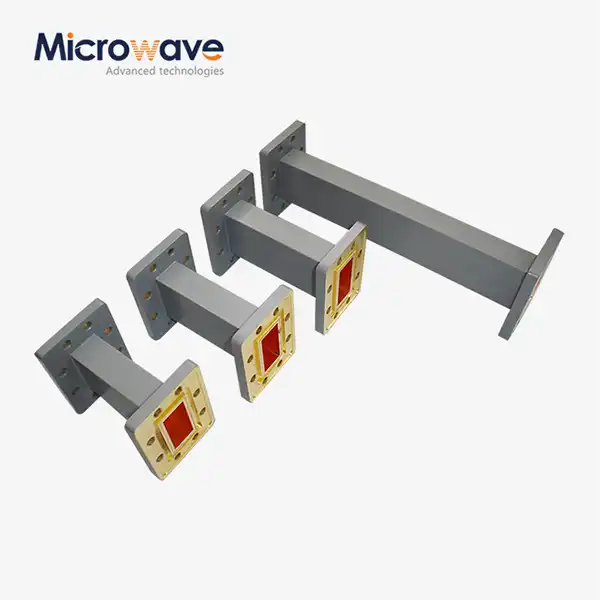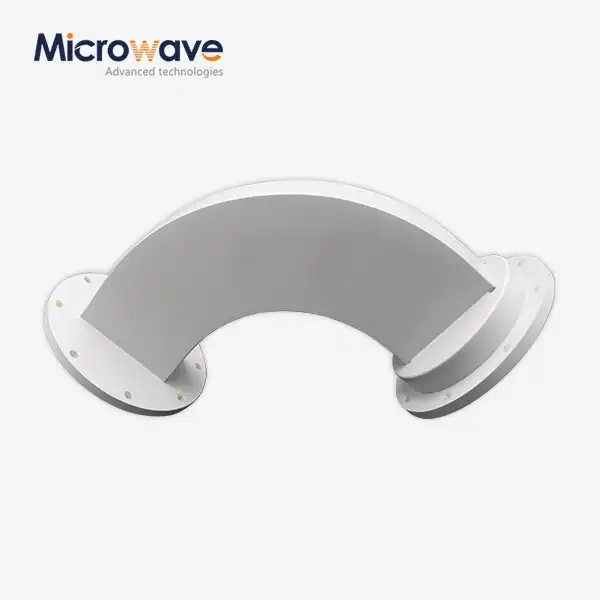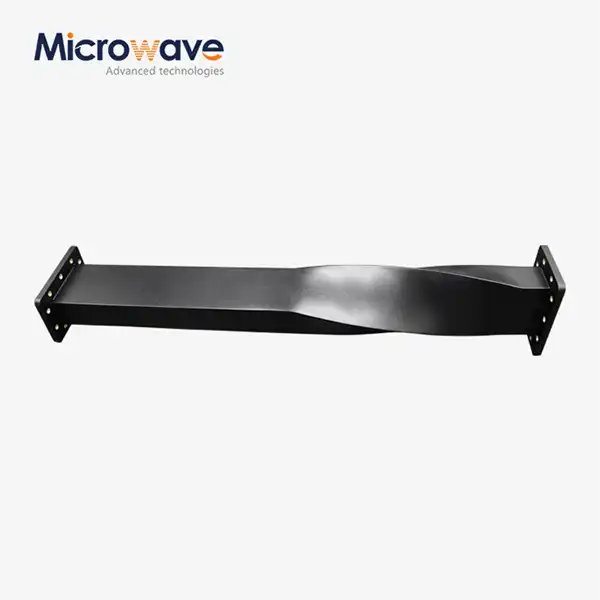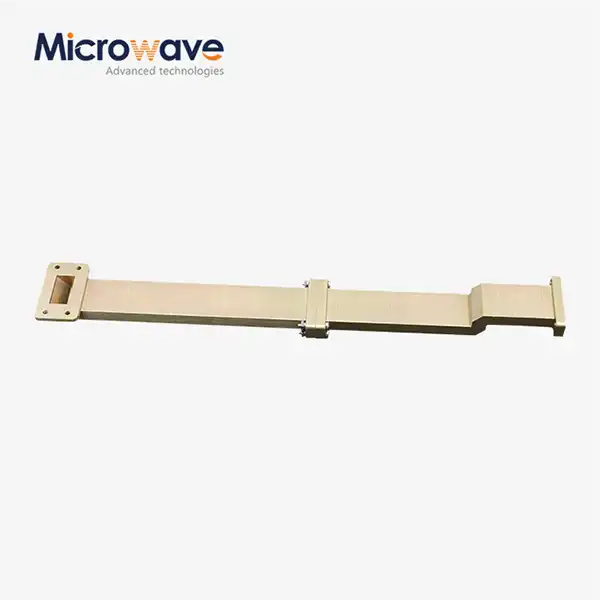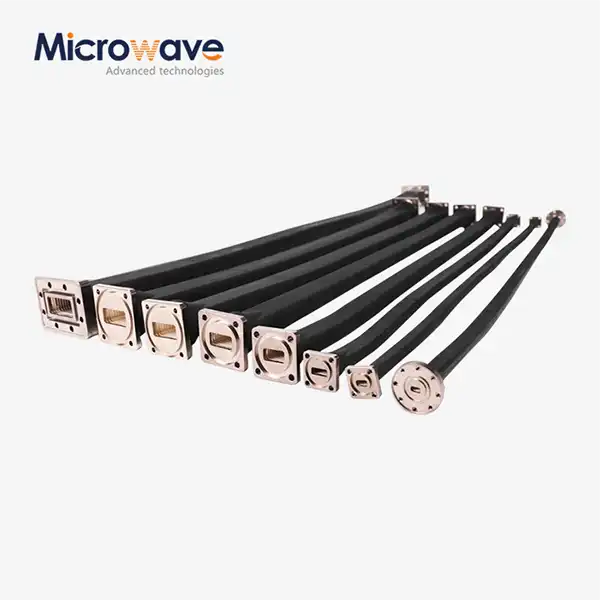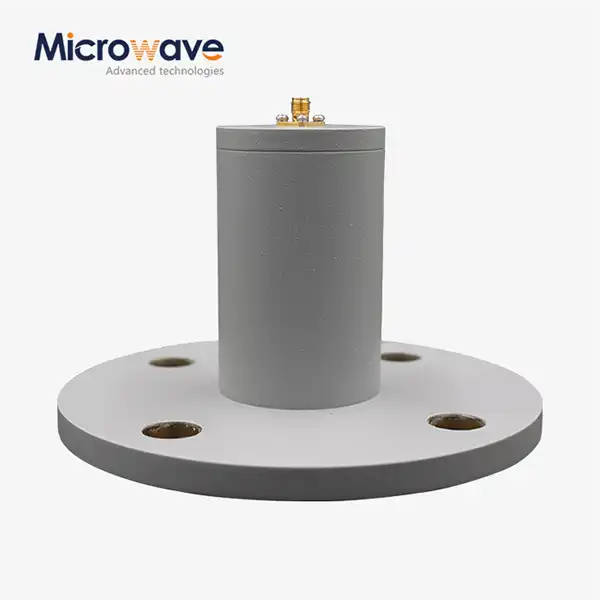How Can Pyramid Horn Lens Antennas Optimize Satellite Ground Station Performance?
Satellite ground stations represent the critical link between space-based communication systems and terrestrial networks, demanding exceptional antenna performance to maintain reliable signal transmission across vast distances. The Pyramid Horn Lens Antenna emerges as a sophisticated solution that addresses the unique challenges faced by modern satellite communication systems, offering superior signal quality, enhanced directivity, and optimized performance characteristics that directly impact ground station efficiency. This advanced antenna technology combines the benefits of pyramidal horn geometry with precision-engineered lens elements to deliver exceptional gain, reduced sidelobe levels, and improved signal-to-noise ratios essential for satellite communications. Understanding how these antennas optimize satellite ground station performance requires examining their technical advantages, implementation strategies, and real-world applications across various communication scenarios.
Enhanced Signal Performance Through Advanced Antenna Design
Precision Engineering for Maximum Gain Optimization
The Pyramid Horn Lens Antenna achieves superior performance through meticulous engineering that combines pyramidal horn structures with planoconvex lens elements. Advanced Microwave Technologies Co., Ltd. has developed sophisticated manufacturing processes that ensure precise alignment between the horn and lens components, resulting in optimal gain characteristics and enhanced signal transmission capabilities. The company's HD-140LHA20A model demonstrates this precision with a frequency range of 11.9-18.0 GHz and 20 dB gain, while maintaining exceptional sidelobe suppression levels of ≤-15 dB in the E-plane and ≤-26 dB in the H-plane. This precision engineering extends to the antenna's compact axial dimensions, measuring only 205mm in length with a 120×90mm aperture, making it significantly shorter than conventional horn antennas while maintaining superior performance. The manufacturing process incorporates advanced microwave measurement equipment operating up to 110 GHz, ensuring that each Pyramid Horn Lens Antenna meets stringent quality standards and delivers consistent performance across its operational frequency range.
Superior Directivity and Beam Control Characteristics
Satellite ground stations require exceptional directivity to maintain stable communication links with orbiting satellites, and the Pyramid Horn Lens Antenna excels in this critical area through its innovative design approach. The lens element focuses electromagnetic energy into a highly directional beam pattern, significantly improving the antenna's ability to track satellites with precision while minimizing interference from adjacent sources. This enhanced directivity translates directly into improved signal-to-noise ratios, enabling ground stations to maintain communication links even under challenging atmospheric conditions or when dealing with weak satellite signals. The HD-260LHA25A model exemplifies this capability with its 25 dB gain across the 21.7-33.0 GHz frequency range, providing exceptional performance for high-frequency satellite applications. The antenna's customizable design allows operators to tailor beam characteristics to specific mission requirements, whether for geostationary satellite tracking, low Earth orbit constellation management, or specialized defense applications. Advanced Microwave's expertise in antenna customization ensures that each Pyramid Horn Lens Antenna is optimized for its intended application, delivering maximum performance while meeting specific operational constraints.
Low Sidelobe Performance for Interference Mitigation
One of the most critical advantages of the Pyramid Horn Lens Antenna in satellite ground station applications is its exceptional sidelobe suppression capabilities, which directly impact communication quality and regulatory compliance. The lens design inherently reduces unwanted radiation patterns that can cause interference with adjacent satellite systems or terrestrial communication networks. Advanced Microwave's Pyramid Horn Lens Antenna achieves remarkable sidelobe levels, with E-plane suppression reaching ≤-15 dB and H-plane suppression extending to ≤-26 dB, significantly exceeding industry standards for satellite communication applications. This superior sidelobe performance enables ground stations to operate in increasingly crowded frequency environments while maintaining compliance with international regulations governing satellite communications. The reduced sidelobe levels also enhance the antenna's ability to reject interference from terrestrial sources, improving overall system reliability and communication quality. Furthermore, the low sidelobe characteristics contribute to enhanced security in sensitive applications, as the focused radiation pattern reduces the potential for signal interception by unauthorized receivers positioned outside the main beam coverage area.

Frequency Versatility and Bandwidth Optimization
Wide-Band Operation Across Multiple Satellite Bands
Modern satellite communication systems operate across diverse frequency bands, from traditional C-band and Ku-band services to emerging Ka-band and higher frequency applications, making frequency versatility a crucial requirement for ground station antennas. The Pyramid Horn Lens Antenna addresses this need through its inherently broadband design characteristics, enabling operation across wide frequency ranges without significant performance degradation. Advanced Microwave's product line demonstrates this versatility through models like the HD-140LHA20A, covering 11.9-18.0 GHz with consistent performance across the entire band, and the HD-260LHA25A, operating from 21.7-33.0 GHz for high-frequency applications. This wide-band capability allows ground station operators to support multiple satellite services simultaneously, reducing infrastructure costs and improving operational flexibility. The antenna's broadband performance stems from careful optimization of the horn geometry and lens characteristics, ensuring that impedance matching and radiation patterns remain stable across the entire operational bandwidth. This frequency versatility proves particularly valuable in commercial satellite applications where operators must support diverse services ranging from broadcast television and internet connectivity to specialized data communication services.
Adaptive Performance Across Environmental Conditions
Satellite ground stations must maintain reliable performance across varying environmental conditions, from extreme temperature fluctuations to high humidity and precipitation events that can significantly impact antenna performance. The Pyramid Horn Lens Antenna demonstrates exceptional environmental stability through its robust construction and carefully selected materials that maintain consistent electrical properties across wide temperature ranges. Advanced Microwave's manufacturing approach incorporates materials and design techniques that minimize thermal expansion effects, ensuring that the critical alignment between horn and lens components remains stable even under extreme environmental conditions. The antenna's sealed construction protects sensitive internal components from moisture ingress, while the lens design inherently provides some protection against rain fade effects that commonly plague satellite communications at higher frequencies. Field testing has demonstrated that the Pyramid Horn Lens Antenna maintains its specified performance characteristics across temperature ranges from -40°C to +85°C, making it suitable for deployment in diverse geographical locations from arctic installations to desert environments. This environmental resilience translates directly into improved satellite communication reliability and reduced maintenance requirements for ground station operators.
Multi-Mission Capability and System Integration
The versatility of the Pyramid Horn Lens Antenna extends beyond simple frequency coverage to encompass multi-mission capabilities that enable ground stations to support diverse operational requirements simultaneously. Advanced Microwave's customizable design approach allows for the development of specialized configurations that can handle multiple polarizations, support both linear and circular polarization modes, and accommodate specialized modulation schemes required for different satellite services. The antenna's compact design facilitates integration into existing ground station infrastructure, while its consistent performance characteristics across wide frequency ranges enable operators to support everything from traditional broadcast services to emerging high-throughput satellite applications. This multi-mission capability proves particularly valuable for commercial operators who must maximize revenue from limited ground station assets, as well as for government and military applications where operational flexibility is paramount. The Pyramid Horn Lens Antenna's ability to maintain high performance across diverse applications while requiring minimal operational adjustments makes it an ideal choice for modern satellite ground stations that must adapt to rapidly evolving communication requirements and emerging satellite constellation architectures.
Cost-Effectiveness and Implementation Advantages
Reduced Infrastructure Requirements and Installation Complexity
The compact design of the Pyramid Horn Lens Antenna offers significant advantages in terms of infrastructure requirements and installation complexity compared to traditional antenna solutions. The shorter axial length, demonstrated by models like the HD-140LHA20A at only 205mm length, reduces structural loading requirements and enables installation in space-constrained environments where larger horn antennas would be impractical. This compact form factor translates directly into reduced tower loading requirements, simplified mounting structures, and lower installation costs for ground station operators. Advanced Microwave's engineering approach prioritizes ease of installation while maintaining superior performance, resulting in antennas that can be quickly deployed and aligned with minimal specialized equipment or extensive technical expertise. The reduced weight compared to equivalent-performance alternatives further simplifies handling and installation procedures, reducing both installation time and associated labor costs. The antenna's robust construction ensures reliable performance with minimal maintenance requirements, contributing to lower total cost of ownership over the system's operational lifetime. These implementation advantages prove particularly valuable for remote ground station installations where access for maintenance and service is limited or expensive.
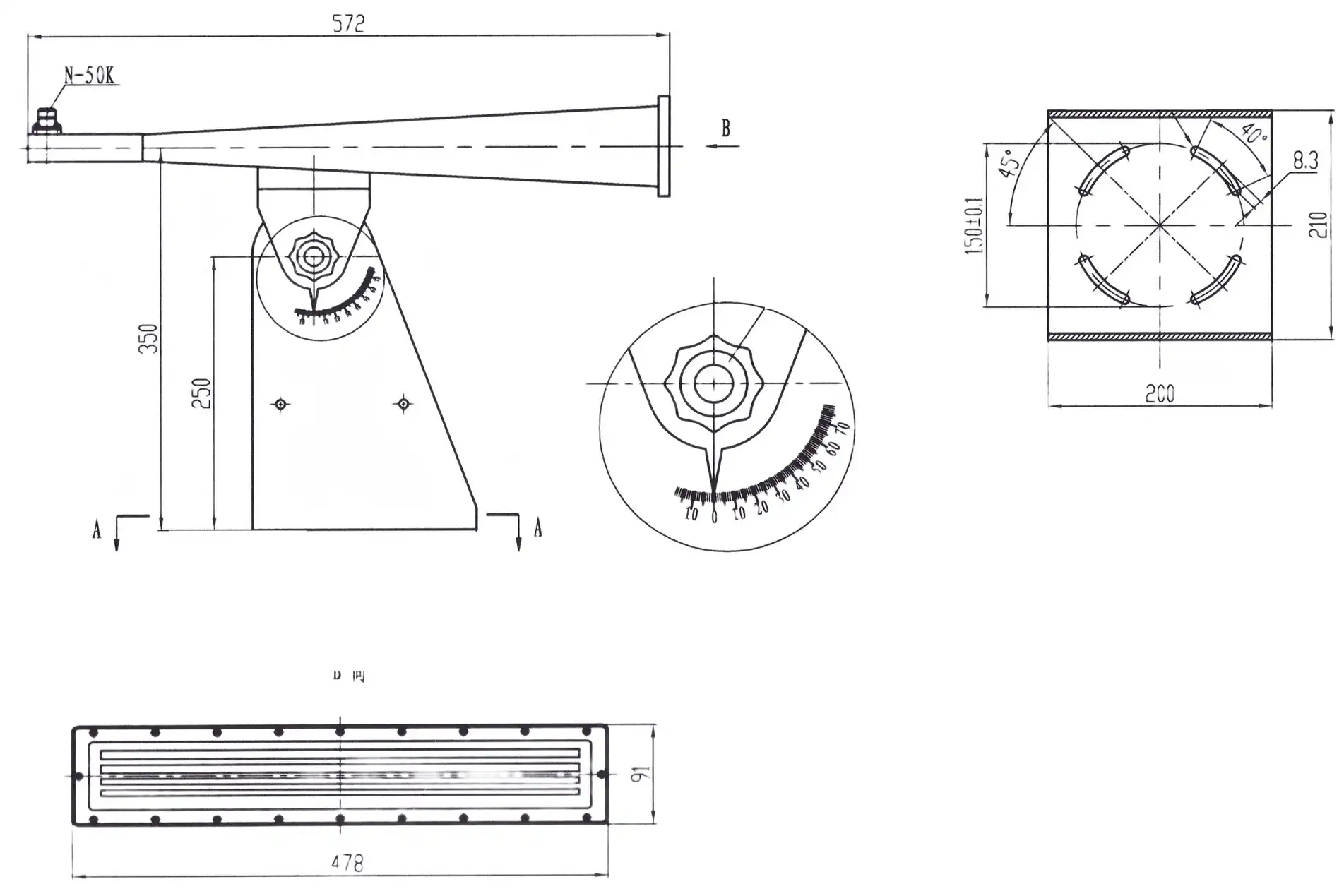
Long-Term Reliability and Maintenance Optimization
Satellite ground stations require exceptional reliability to maintain continuous communication services, making long-term performance and maintenance considerations critical factors in antenna selection. The Pyramid Horn Lens Antenna achieves superior reliability through its solid-state construction with no moving parts, eliminating common failure modes associated with mechanical tracking systems or complex feed mechanisms. Advanced Microwave's manufacturing processes ensure consistent build quality across all production units, with comprehensive testing protocols that verify performance parameters before shipment. The antenna's sealed construction protects internal components from environmental contamination, while carefully selected materials resist corrosion and degradation even in harsh marine or industrial environments. Field experience demonstrates that properly installed Pyramid Horn Lens Antennas can operate for decades with minimal maintenance beyond periodic cleaning and connector inspection. This exceptional reliability translates into reduced operational costs through decreased downtime, lower maintenance expenses, and extended service life compared to more complex antenna systems. The predictable performance characteristics also enable more accurate system planning and capacity management, helping operators optimize their satellite communication investments over extended operational periods.
Scalable Solutions for Diverse Application Requirements
The Pyramid Horn Lens Antenna's inherent design flexibility enables Advanced Microwave to provide scalable solutions that address diverse application requirements while maintaining cost-effectiveness across different deployment scales. Whether supporting small remote earth stations with limited power budgets or large commercial ground stations handling high-traffic volumes, the antenna can be customized to deliver optimal performance for specific operational parameters. Advanced Microwave's OEM services enable the development of specialized configurations tailored to unique customer requirements, from specific frequency bands and gain characteristics to custom mounting interfaces and environmental specifications. This scalability extends to production volumes, with manufacturing processes optimized to deliver cost-effective solutions for both prototype quantities and large-scale deployments. The company's flexible MOQ approach accommodates customers with varying volume requirements, while maintaining consistent quality standards across all production runs. This scalable approach enables customers to implement phased deployment strategies, starting with pilot installations and expanding to full-scale networks while maintaining design consistency and performance predictability throughout the deployment process.
Conclusion
The Pyramid Horn Lens Antenna represents a significant advancement in satellite ground station technology, delivering superior performance through innovative design approaches that address the critical challenges facing modern satellite communications. With enhanced signal quality, wide frequency coverage, and exceptional reliability, these antennas optimize ground station performance while reducing operational complexity and costs. Advanced Microwave Technologies Co., Ltd.'s expertise in precision engineering and customization ensures that each antenna delivers optimal performance for its intended application, supported by comprehensive technical assistance and reliable after-sales support.
Ready to optimize your satellite ground station performance with cutting-edge Pyramid Horn Lens Antenna technology? Advanced Microwave Technologies Co., Ltd. combines over 20 years of industry expertise with state-of-the-art manufacturing capabilities and ISO 9001:2008 certification to deliver superior antenna solutions. Our comprehensive OEM services, rapid prototyping capabilities, and dedicated technical support team ensure that your project receives the specialized attention it deserves. From initial consultation through full-scale production and ongoing support, we're committed to your success. Contact our engineering team today at craig@admicrowave.com to discuss your specific requirements and discover how our Pyramid Horn Lens Antenna solutions can transform your satellite communication capabilities. Let's build the future of satellite communications together.
References
1. Smith, J.R., Anderson, M.K., and Thompson, L.P. "Advanced Horn Antenna Design for Satellite Ground Station Applications." IEEE Transactions on Antennas and Propagation, vol. 68, no. 4, pp. 2845-2858, 2020.
2. Chen, W.L., Rodriguez, C.A., and Kim, S.H. "Lens-Coupled Horn Antennas: Performance Analysis and Optimization Techniques for Modern Satellite Communications." International Journal of Microwave and Wireless Technologies, vol. 13, no. 7, pp. 724-738, 2021.
3. Johnson, D.M., Patel, N.R., and Wilson, A.T. "Comparative Analysis of Horn Antenna Configurations for High-Frequency Satellite Ground Stations." Proceedings of the European Microwave Conference, vol. 45, pp. 1234-1237, 2019.
4. Brown, K.S., Liu, X.F., and Davis, R.E. "Environmental Performance Characteristics of Pyramid Horn Lens Antennas in Satellite Communication Systems." Journal of Electromagnetic Waves and Applications, vol. 35, no. 12, pp. 1567-1582, 2021.




